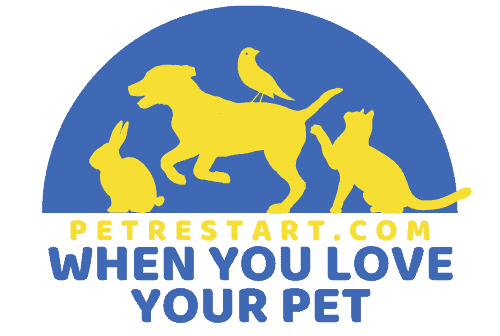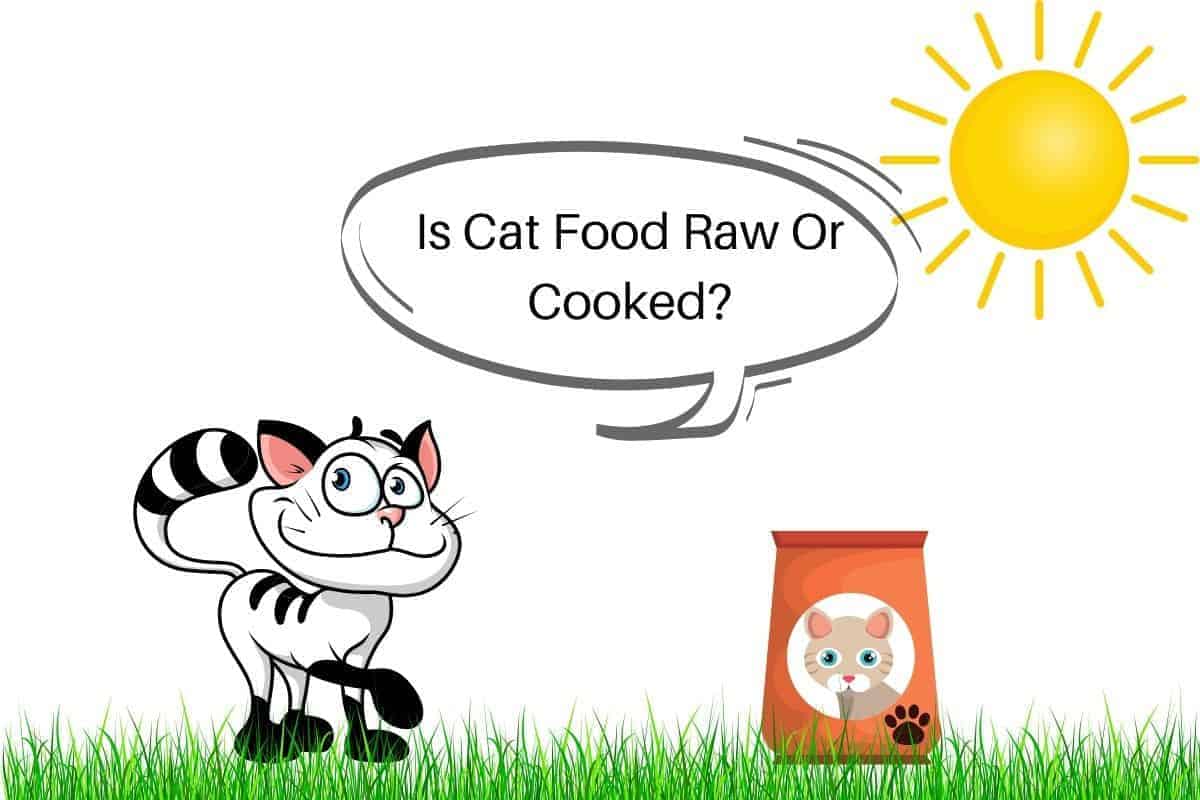Because we are the primary caregivers of our cats, it only makes sense that we occasionally wonder what goes on in our children’s food. Likewise, we often are concerned about how our cat’s diet is prepared and if it is the best possible choice.
With wet or moist cat food, the raw ingredients are filled directly into an airtight, sealed can and heated until fully cooked once the contents are mixed and crushed together. When it comes to dry cat food, the food contents have been cooked and pasteurized with heat, making it a cooked product.
Let’s investigate further and enlighten you with the possible knowledge regarding how your kitty’s wet and dry food diets are produced and whether it is processed or not!
Is Wet Cat Food Raw Or Cooked?
It is no secret that wet food certainly looks much more flavorful than dry cat food, but we are left wondering if those delicious-looking meaty chunks are really made with meaty chunks. Following are some of the basics that go into the production of a wet cat food product.
We all know what meat looks like, as we see it all the time in the meat section n our local grocery store. These meats that we see, however, are the parts of the animal that people find flavorsome and nutritious. The rest of the meat, meaning the unwanted meat parts of animals, are set aside.
These are parts like the head, feet, heart, kidney, stomach, liver, and intestine. Most food companies use these meats since they are all considered rich sources of protein. These parts and organs are chilled or frozen as their sources and then transported to the food production sites, where the parts are broken down into bite-sized chunks using grinders and knives.
For some especially required recipes, even finer grinds can be used for a different texture. Using this method, materials are mashed or chopped. These chunky bits are generally made using texturized vegetable protein.
When making wet cat food, the second most important part is the gravy solution that will hold it all together. Pet food companies use gels and thickeners to add consistency and texture to the food, and the gravy is created following a highly specific formula.
First, the mashed or chopped chunks and other ingredients like grains, minerals, and vitamins are mixed thoroughly with the gravy or gel. At the same time, it is all slowly being heated so that the ingredients are cooked.
Once this process is finished, the food is pumped into cans or pouches. Finally, the food containers are sealed, and the cat food is now ready to be sent to the next phase of production.
Unlike dry cat food, very few preservatives are added to wet foods. This ultimately means that the most crucial part of producing wet food is the process of sterilization. Once the containers are filled and sealed, they are placed in a heat sterilization device for canned foods. This device is called a retort, which brings the temperature and pressure of the containers to a carefully specified level.
This level of heat and pressure are both designed to kill bacteria and pressure seal the cans, so no spoilage is possible before opening. This process is effective because it successfully kills harmful bacteria or molds in the products, so they can safely sit on your store’s shelves until they are purchased and opened.
Is Dry Cat Food Raw Or Cooked?
Next, let’s take a look at the dry cat food. These are the types of food that almost look like cereal for your cat. They are usually dry or may have an oily feel to them. But dry foods will crack and break if you step on them, with no moisture left.
Dry kibble provides the largest portion of calories for cats all around the world. While there are several different ways to produce dry pet food, such as drying and extrusion, the most commonly used process is extrusion.
With extrusion, the ingredients are all brought together in a large, strong mixer. The dry ingredients are usually ground to a fine grind before introduction to wet ingredients. Once all the different ingredients are mixed, they form a moist dough.
The cooking process is now ready to be started, as the dough is completely formed. First, the dough enters a massive machine known as an extruder, which cooks the dough under pressure. At the open end of the extruder, the dough will exit under pressure.
The dough will now be rolled out under pressure on top of a giant plate with molds. The molds will then enter the cooked dough, creating ribbons of pre-specified shapes that are then sliced while they expand into the desired size using a rotary cutter.
Next, after extrusion and cutting, the kibble is air-dried in an oven to remove water and is then cooled. Reducing moisture is an important step in maintaining freshness and preventing freshly produced cat food from spoiling.
A cooling phase follows the drying oven. After cooling, the kibble will often enter a revolving drum where they are all evenly coated with a mix of flavors known as general flavor enhancers. These flavor enhancers do not only enhance the taste of your cat food but also adds preservatives to prevent spoilage through the shelf life of the food.
Finally, in the last phase, the packaging is filled in precise amounts to meet the weight advertised. Your kitty’s food is now store-ready!
Is Cat Food Processed?
Except for the usual ingredients, the general manufacturing for different types of cat food is extremely similar to that for human processed food. The flesh products used in pet foods must be rendered or processed to separate the water, fat, and protein components. Generally, the meat is rendered by outside companies and then shipped to pet food companies and manufacturers.
It is crucial to know that the meat products intended for your cat’s canned food must be delivered fresh and should be used within three days. The same frozen meat products may be used for dry cat food as well.
The basic manufacturing process entails grinding and cooking the flesh and flesh byproducts. Next, the meat is mixed with the other ingredients, and the mixture is shaped into the desired forms or textures. Although all types of cat food are processed, the processes in cat food have led to better quality products with a longer shelf life.
Thanks to cat food processing, these bags, cans, or pouches usually have a shelf life of three to five years and are very stable, with little to no loss in nutritional value. When it comes to dry cat food, on the other hand, it only has a shelf life of ten to twelve months, even after the addition of preservatives.
Some companies and manufacturers use preservatives such as vitamins E and C, but they do not prolong their overall shelf life.
Conclusion
Complete and balanced cat food products are formulated by the single soure of nutrition for your beloved cat at the end of the day. Unfortunately, most cats are sustained mainly by feeding a large diet of a single desired commercial cat food product. This will negatively impact them, as you could imagine what the same diet year after year can do to us as humans.
Even if these cat food products are processed, raw, or cooked, several careful reviews and tests are always completed to ensure pet safety and overall nutrition and quality control. The best possible way to feed your cat would be through several different diets, ranging from a raw and cooked diet.
If you, as a cat parent, don’t feel much more relieved now about what goes in your kitty’s diet and how it goes in, you should! Our cat’s health and diets are of utmost importance to our beloved pet food companies and manufacturers. Therefore, the best and necessary formulas will always be followed to benefit our kitties in the most possible way!
Resources
- What Goes Into Making Wet Pet Food?
- How pet food is made – making, used, processing, parts, components, product, industry, machine
- Is Freeze-Dried Cat Food Better?
- Pet Foods – an overview
- How dry food is made
- How Are Dry Pet Foods Made?
- How pet food is made – making, used, processing, parts, components, product, industry, machine




